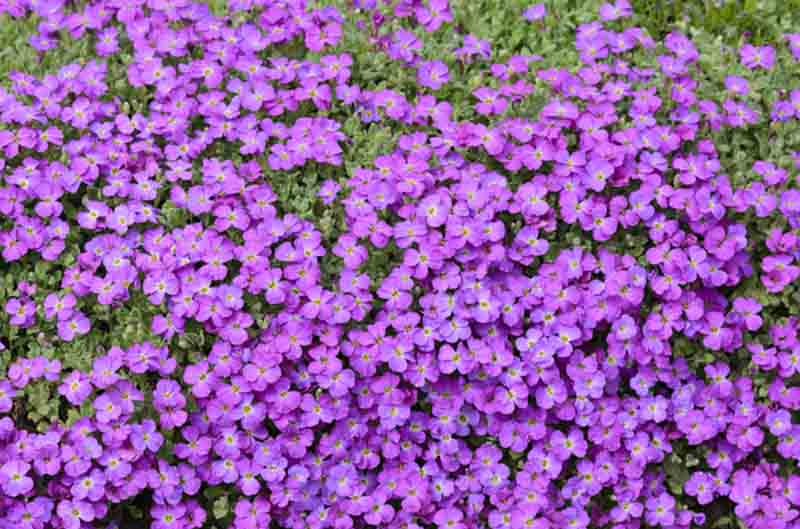
Rock Cress
Rock cress, botanically known as Arabis, blooms as early in spring as anemone. It forms masses of small blooms which cover the low mounding plant—Flowers last through most of the spring.
At the end of spring, the blooms disappear, revealing an attractive plant that forms a grey-green attractive mound.
Rockcress is a logical plant for rock gardens. Plant it on top of a stone retaining wall, and it will cascade over and sprout from the cracks in the rock face.
Like an anemone, rockcress has a cultivar named Snowdrop. Its prolific blooms are pure white. I also have a pink/white Arabis that I believe is called Spring Charm.
Arabis is available in white, pink, and darker rose color.
Arabis likes a sunny location but will tolerate partial shade. It does not need rich soil but does not like to dry out, particularly when blooming. Arabis will bloom through most of the spring season.
As soon as the flowers begin to fade, try shearing the plant to remove the spent flowers. This treatment may trigger a second shot of bloom.
Arabis is often confused with aubretia. They are both low-growing and bloom in early spring. The common name of rockcress widely knows both. Aubretia claims to be hardier, but nobody has substantiated proof of that claim.
My Arabic is fully exposed to the roughs of rural winter, and I gave it no special winter protection.
Plant rockcress in the front of a border. Use its attractive foliage to hang over a stone wall. The foliage of rockcress is evergreen, so it remains effective all year round.
If you make the mistake of pruning or cleaning up the foliage of Arabis in the fall, it will flower much less the following spring.
Rock Cress Genus
The genus Aubrieta Adans. There are 12-24 species that naturally occur in South-West Asia, mainly in Anatolia and South Southeast Europe.
These species are found in alpine, mountain, and subalpine altitudinal areas. A. is the most widespread. DC. deltoidea L. It is a well-known ornamental garden plant, both in Western Europe and elsewhere. It is often an ornamental plant for gardens in Europe and other countries.
In the last 10-15 years, this species has been cultivated in Ukraine and Eastern Europe. A. The nomenclature, basic synonymy, and complete morphological description of deltoidea are all available.
The distribution of the product in Ukraine and Eastern Europe is given for the first time. The analysis and generalization of It were suggested that the ecological and biological specialty, characteristics of plant distribution, and cultivation were important factors in the climatic.
Rock Cress Care Essentials
These plants are a result of mountainous terrain. You can guess that they require well-drained soil. Rockcress can thrive in the smallest cracks or even pure gravel. This is why it is often found in the most drained soils.
This plant can withstand extreme drought and thrives in a container.
These plants love alkaline soil due to their hardy upbringings. Overwatering or placing plants in moist areas can cause them to die.
Rockcress needs full sun. Blossoms won’t be as vibrant or as abundant if they aren’t in full sunlight. Full sun encourages the tightest habits. Rockcress is best kept neat after its stunning display of flowers.
There is a good chance that rockcress will reseed if you don’t remove the blossoms. This is a good thing, as rock cress can live a short time and become a perennial.
Although they aren’t invasive, you can place the seeds where you want them.
Rock cress can have a shorter life span in areas that experience hot, humid summers. To increase their longevity, plant them in partial shade.


























Comments are closed.